-
 Bitcoin
Bitcoin $118300
-1.72% -
 Ethereum
Ethereum $3591
-0.69% -
 XRP
XRP $3.478
-3.53% -
 Tether USDt
Tether USDt $1.001
-0.01% -
 BNB
BNB $737.7
-0.54% -
 Solana
Solana $177.3
-2.40% -
 USDC
USDC $0.9999
-0.01% -
 Dogecoin
Dogecoin $0.2538
7.04% -
 TRON
TRON $0.3256
-0.85% -
 Cardano
Cardano $0.8332
-3.48% -
 Hyperliquid
Hyperliquid $44.80
-3.30% -
 Stellar
Stellar $0.4672
-6.09% -
 Sui
Sui $3.828
-5.98% -
 Chainlink
Chainlink $18.15
-3.41% -
 Hedera
Hedera $0.2655
-7.16% -
 Bitcoin Cash
Bitcoin Cash $517.5
-0.64% -
 Avalanche
Avalanche $23.89
-2.37% -
 Shiba Inu
Shiba Inu $0.00001519
-0.45% -
 UNUS SED LEO
UNUS SED LEO $8.973
0.13% -
 Toncoin
Toncoin $3.211
-2.54% -
 Litecoin
Litecoin $103.5
-3.58% -
 Polkadot
Polkadot $4.313
-3.90% -
 Uniswap
Uniswap $10.31
0.67% -
 Monero
Monero $325.4
-2.88% -
 Bitget Token
Bitget Token $5.049
3.51% -
 Ethena USDe
Ethena USDe $1.002
0.04% -
 Pepe
Pepe $0.00001346
-2.96% -
 Dai
Dai $0.9999
-0.02% -
 Aave
Aave $322.1
-2.93% -
 Bittensor
Bittensor $411.9
-4.70%
Should I leave the market after the volume falls after the volume stagnation?
Volume stagnation in crypto markets reflects indecision, not necessarily weakness, and may precede a breakout once momentum returns.
Jun 29, 2025 at 10:56 pm
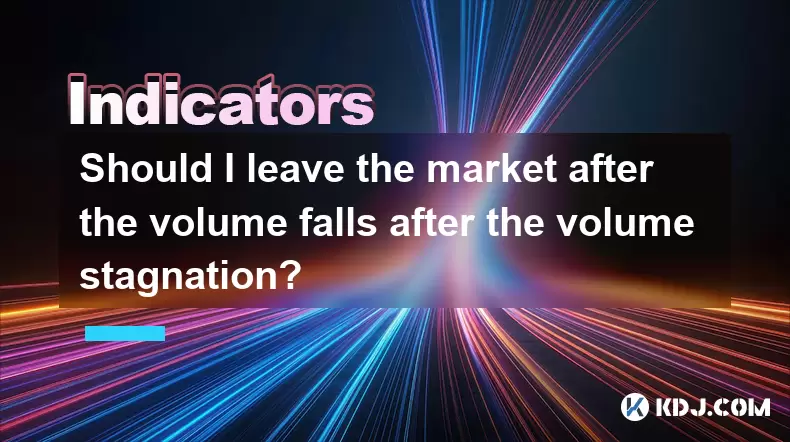
Understanding Volume Stagnation in Cryptocurrency Markets
In cryptocurrency trading, volume stagnation refers to a period where the trading volume of an asset remains relatively flat or shows minimal movement over time. This phenomenon often occurs during consolidation phases or when market participants are uncertain about the next price direction. During such periods, traders might observe that price action lacks strong momentum, and trading activity is subdued, leading to hesitation among investors regarding whether to hold or exit their positions.
Volume stagnation typically reflects a balance between buying and selling pressure. In this phase, neither bulls nor bears have control, which can lead to sideways price movement. It's important to recognize that volume stagnation is not inherently bearish; rather, it signals indecision and could precede a breakout in either direction depending on subsequent market catalysts.
The Implication of Falling Volume After Stagnation
When volume falls after a period of stagnation, it may suggest a decline in interest from traders and investors. A drop in volume following stagnant levels can indicate weakening liquidity or reduced confidence in the current trend. This scenario often raises concerns among traders who entered positions during the consolidation phase, prompting them to question whether they should continue holding or consider exiting.
A significant drop in volume after stagnation may be interpreted as a warning sign, especially if it coincides with other technical indicators pointing toward weakness. For instance, if price begins to fall alongside decreasing volume, it may signal a lack of support at current levels and potentially foreshadow further downside movement. However, volume alone should not be used in isolation for decision-making; it must be analyzed in conjunction with price patterns and broader market conditions.
Evaluating Market Context Before Making a Decision
Before deciding whether to leave the market due to falling volume after stagnation, it is essential to assess the broader market context. Is the cryptocurrency in question part of a larger downtrend, or is it consolidating within a healthy uptrend? The answer to this question can significantly influence your strategy.
- Consider the overall trend: If the asset is still within a defined uptrend despite the recent volume drop, exiting prematurely might result in missing out on potential gains once volume picks up again.
- Look at key support and resistance levels: If price is holding above critical support and there’s no major breakdown, the volume decline may just reflect temporary market calm.
- Monitor macroeconomic factors: Events such as regulatory news, changes in monetary policy, or sector-specific developments can impact sentiment and volume dynamics.
Each of these elements contributes to a more comprehensive understanding of whether the drop in volume is a temporary lull or the beginning of a more sustained reversal.
Technical Indicators That Complement Volume Analysis
To make a more informed decision, traders should incorporate additional technical tools that complement volume analysis. Some commonly used indicators include:
- Moving Averages (MA): These help identify trends and potential reversals. A crossover of short-term and long-term moving averages can confirm shifts in momentum.
- Relative Strength Index (RSI): RSI readings below 30 may suggest oversold conditions, while values above 70 indicate overbought scenarios. Combining RSI with volume behavior can offer insight into possible exhaustion points.
- On-Balance Volume (OBV): This indicator uses volume flow to predict changes in stock price. A rising OBV suggests accumulation, while a declining OBV indicates distribution.
Using these tools in tandem with volume observations allows traders to filter out noise and focus on high-probability setups. For example, if volume drops but RSI remains neutral and price holds above key support, it may not be necessary to exit immediately.
Practical Steps for Deciding Whether to Exit
If you're considering leaving the market due to falling volume after a period of stagnation, here are some practical steps to guide your decision-making process:
- Review your entry logic: Reassess why you initially entered the trade. Has the underlying reason changed?
- Check for any fundamental deterioration: Investigate whether there has been negative news or developments affecting the project or ecosystem.
- Evaluate your risk-reward ratio: Determine whether the potential upside still justifies remaining in the position given the current uncertainty.
- Set clear stop-loss and take-profit levels: Having predefined exit points helps remove emotional bias from trading decisions.
- Observe how the market reacts to upcoming events or news: Sometimes, a lack of volume simply means the market is waiting for a catalyst before resuming its trend.
These steps ensure that your decision to stay or leave is based on objective criteria rather than impulse or fear-driven reactions.
Frequently Asked Questions
Q1: Can volume stagnation be a sign of accumulation by large players?
Yes, volume stagnation can sometimes indicate accumulation by institutional investors or whales. During these periods, smart money may quietly build positions without causing noticeable price movement, especially if the asset is fundamentally strong.
Q2: How long does volume stagnation usually last in crypto markets?
The duration varies depending on market conditions. Some assets may experience volume stagnation for a few days, while others may remain in consolidation for weeks or even months before breaking out.
Q3: Does low volume always mean a bearish signal?
No, low volume is not inherently bearish. It often signifies indecision rather than a definitive directional bias. Traders should look for confirmation through price action and other technical indicators before drawing conclusions.
Q4: Should I adjust my position size during volume stagnation?
Adjusting position size depends on your risk tolerance and strategy. Some traders reduce exposure during low-volume periods to mitigate uncertainty, while others maintain their stance if fundamentals remain intact.
Disclaimer:info@kdj.com
The information provided is not trading advice. kdj.com does not assume any responsibility for any investments made based on the information provided in this article. Cryptocurrencies are highly volatile and it is highly recommended that you invest with caution after thorough research!
If you believe that the content used on this website infringes your copyright, please contact us immediately (info@kdj.com) and we will delete it promptly.
- Shiba Inu, Ethereum Classic, and Remittix: Which Crypto Will Dominate?
- 2025-07-19 20:48:26
- TOKEN6900 Presale Heats Up: The Meme Coin to Watch in 2025
- 2025-07-19 20:48:27
- Donkey Kong, Collecting, and Super Mario: A Retro Gaming Resurgence?
- 2025-07-19 20:50:11
- Bitcoin, Nexchain, and Crypto Presales: What's Hot in the NYC Crypto Scene?
- 2025-07-19 20:55:12
- EVM Layer 2 Meme Coin Mania: SHIB, PEPE, and the Rise of LILPEPE
- 2025-07-19 21:15:11
- Altcoin Season Incoming? Coins Ready to Explode!
- 2025-07-19 18:30:12
Related knowledge
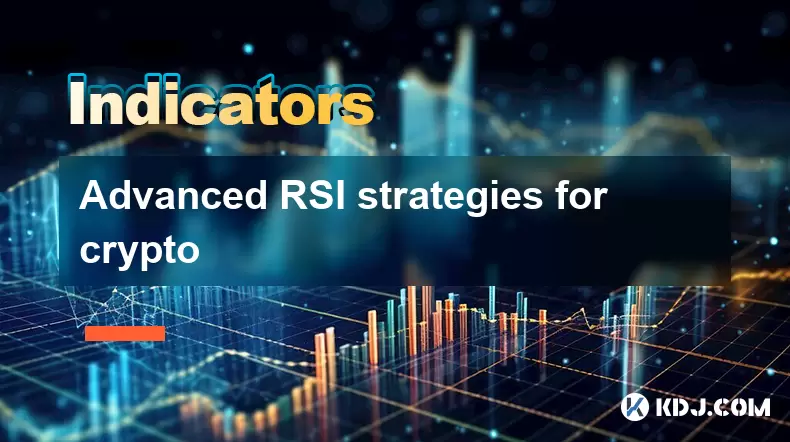
Advanced RSI strategies for crypto
Jul 13,2025 at 11:01am
Understanding the Basics of RSI in Cryptocurrency TradingThe Relative Strength Index (RSI) is a momentum oscillator used to measure the speed and chan...
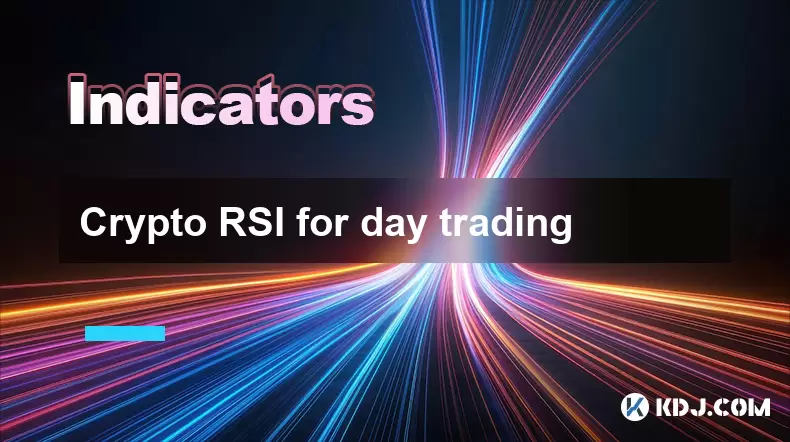
Crypto RSI for day trading
Jul 12,2025 at 11:14am
Understanding RSI in the Context of Cryptocurrency TradingThe Relative Strength Index (RSI) is a momentum oscillator used to measure the speed and cha...
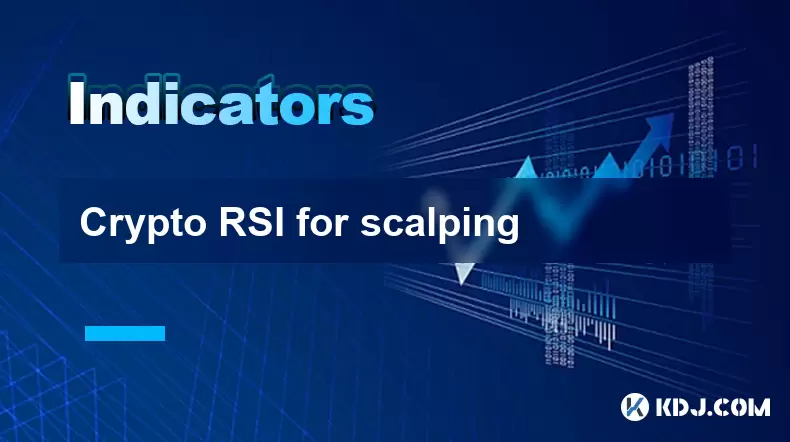
Crypto RSI for scalping
Jul 12,2025 at 11:00pm
Understanding RSI in the Context of Crypto TradingThe Relative Strength Index (RSI) is a momentum oscillator widely used by traders to measure the spe...
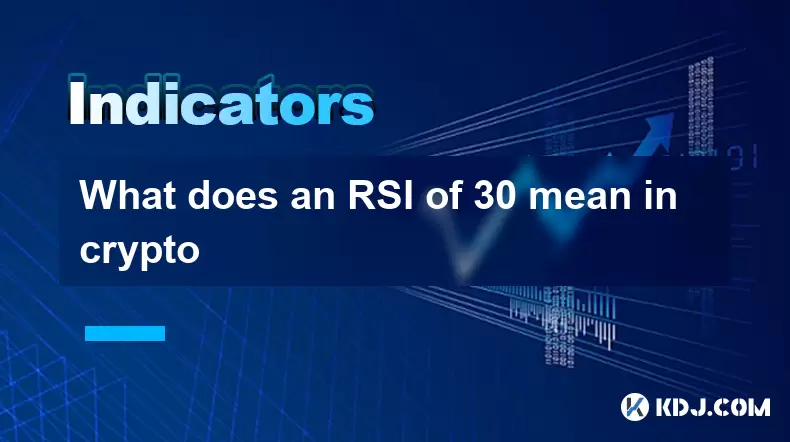
What does an RSI of 30 mean in crypto
Jul 15,2025 at 07:07pm
Understanding RSI in Cryptocurrency TradingRelative Strength Index (RSI) is a momentum oscillator widely used in cryptocurrency trading to measure the...
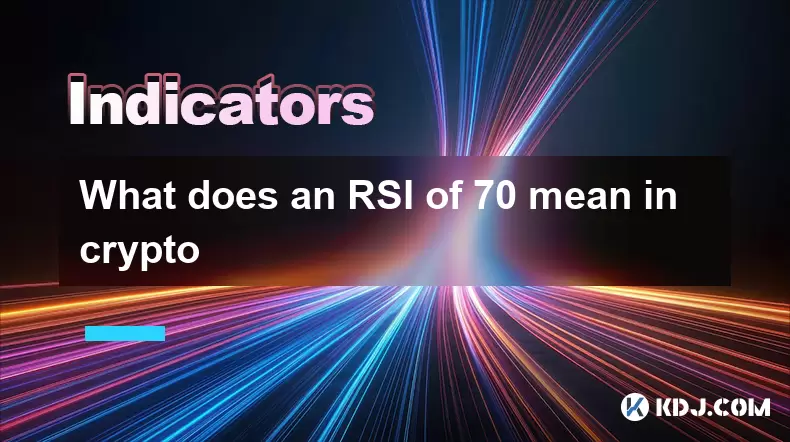
What does an RSI of 70 mean in crypto
Jul 13,2025 at 06:07pm
Understanding the RSI Indicator in Cryptocurrency TradingThe Relative Strength Index (RSI) is a widely used technical analysis tool that helps traders...
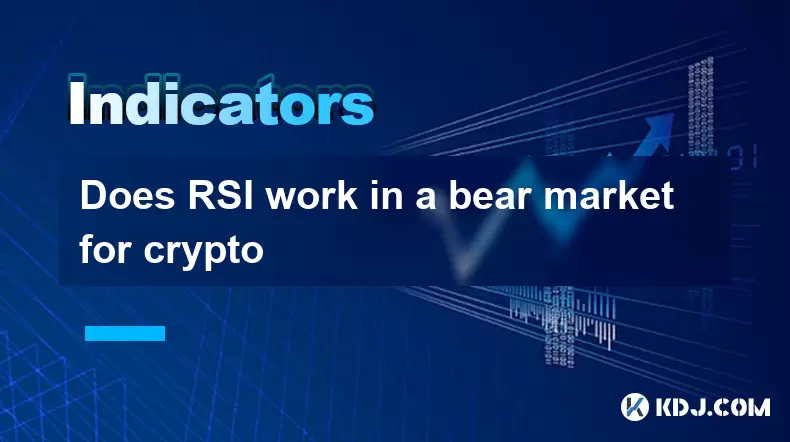
Does RSI work in a bear market for crypto
Jul 16,2025 at 01:36pm
Understanding RSI in Cryptocurrency TradingThe Relative Strength Index (RSI) is a momentum oscillator used by traders to measure the speed and change ...

Advanced RSI strategies for crypto
Jul 13,2025 at 11:01am
Understanding the Basics of RSI in Cryptocurrency TradingThe Relative Strength Index (RSI) is a momentum oscillator used to measure the speed and chan...

Crypto RSI for day trading
Jul 12,2025 at 11:14am
Understanding RSI in the Context of Cryptocurrency TradingThe Relative Strength Index (RSI) is a momentum oscillator used to measure the speed and cha...

Crypto RSI for scalping
Jul 12,2025 at 11:00pm
Understanding RSI in the Context of Crypto TradingThe Relative Strength Index (RSI) is a momentum oscillator widely used by traders to measure the spe...

What does an RSI of 30 mean in crypto
Jul 15,2025 at 07:07pm
Understanding RSI in Cryptocurrency TradingRelative Strength Index (RSI) is a momentum oscillator widely used in cryptocurrency trading to measure the...

What does an RSI of 70 mean in crypto
Jul 13,2025 at 06:07pm
Understanding the RSI Indicator in Cryptocurrency TradingThe Relative Strength Index (RSI) is a widely used technical analysis tool that helps traders...

Does RSI work in a bear market for crypto
Jul 16,2025 at 01:36pm
Understanding RSI in Cryptocurrency TradingThe Relative Strength Index (RSI) is a momentum oscillator used by traders to measure the speed and change ...
See all articles

























































































